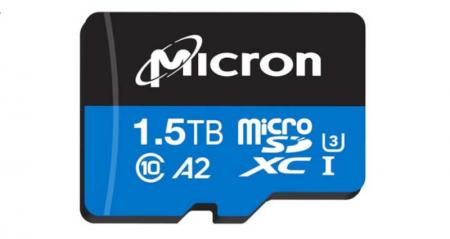
I am one of those people that hate losing features in devices even when it’s a feature I do not even use. An example would be the removal of the headphone jack in premium smartphones. I had moved on to Bluetooth headphones years before its death but was still mad when we lost it.
I feel like I’m justified in my rage when it comes to the microSD card. Only Apple has been averse to that slot from the beginning, the rest used to offer easy storage expansion through it. It really is an affordable way to upgrade your device’s storage.
As a result of the microSD card slot dying slowly, progress in that field has slowed a little. A few players have released 1TB SD cards but that’s old news, we need more.

Dell Inspiron 3450 Core i3 4th Gen
US $200.00GweruHP 11 probookUS $250.00HarareOTG Flash DrivessUS $10.00HarareHp g3/g4 ee Chromebook (mini laptop)US $90.00Harare
Micron’s 1.5TB microSD card
Micron announced a 1.5TB card last year and it is starting to hit shelves. Most computers do not even pack that much storage and yet you can have all that space in a tiny little SD card.
To note though, Micron’s 1.5TB SD card is targeted at the enterprise market, not regular Joes like me. The price tag of over $420 before taxes and shipping says it all.
Micron’s 1.5TB microSD card can handle five years of continuous 24/7 high-quality recording and its average time between failures (MTBF) is around 2 million hours. This makes this little SD card suitable for video security platforms. That is its intended purpose, not to stick it in a smartphone.
For the nerds, the Micron i400 microSD card leveraged Micron’s 176-layer 3D NAND technology. This is similar to the one used in the Solid State Drives that have taken over the computer market.
Demand for high-capacity SD cards was killed by smartphone manufacturers and it is no wonder that Micron is not looking there for a market. Why was the SD card slot killed by the way?
Why the microSD card slot is dying
The argument was that microSD cards made for slower read/write speeds and therefore an inferior smartphone experience. It is hard to argue against this when we look at the UFS 4.0 that Samsung is using in its latest smartphones.
UFS 4.0 offers 4,200MB/s sequential read speeds and 2,800MB/s write speeds. Contrast that with the fastest microSD cards that can only do 300MB/s read and 245MB/s write speeds.
Of course, one could argue that if all they are storing on the microSD card are mostly photos and music files, they won’t mind the slower speeds. I know I don’t, especially because it means more storage for less money.
The other reason the microSD card had to die was security. Then there is the argument that cloud storage and high-speed internet have made the slot redundant. There is merit to these arguments but the real reason was simple – profit.
Manufacturers can’t charge a premium for an SD card slot, but they can charge $100 for a few extra gigabytes of flash storage.
In addition, removing the SD card slot means customers are forced to decide at the time of purchase the storage they want/need. Removing the SD slot and soldering SSD forces people to purchase more storage at the time of purchase.
It is what it is and Apple started it, like always. So, sadly, I’m not that excited about the 1.5TB card because my phone does not take one. I’m excited to see the tech advance though.
What do you think about all this? Does your phone have a microSD card slot and if so, what size card do you have in there?
